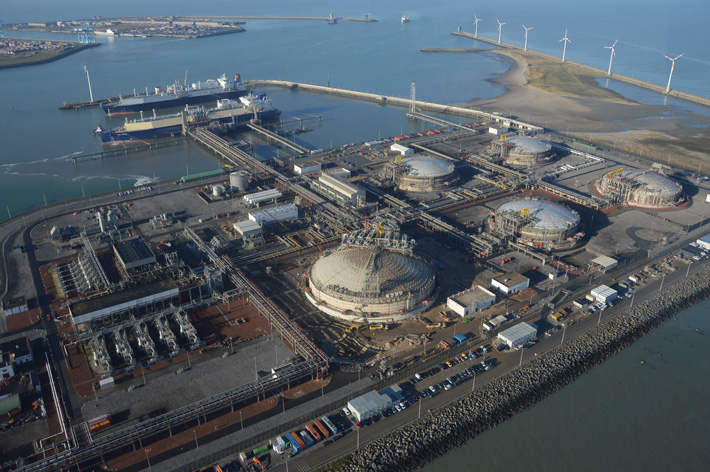Zeebrugge LNG terminal: transshipments under Yamal long-term contract started
The Zeebrugge LNG terminal loaded the Yenisei River vessel with LNG from the newly commissioned LNG storage tank in late December. The loading operation marked the start of the long-term contract for transshipments concluded in 2015 with Yamal Trade.
Pascal De Buck, CEO of Fluxys Belgium: “Our LNG services at the Zeebrugge terminal accommodate the need for low emission energy that comes with the energy transition and unlock an immediately available alternative for the shipping and trucking sectors to move away from high emission fuels. With the start of the long-term contract for transshipments we are taking yet another step in the continuous development of our LNG services offer. The terminal is now also a fully-fledged link in the logistics chain for the worldwide delivery of LNG from the Yamal production terminal in Siberia. The transhipment activity is an important new business line and the port of Zeebrugge will see a significant increase in ship movements.”
Fifth LNG storage tank and associated process facilities successfully commissioned
A fifth LNG storage tank with a capacity of 180 000 m3 LNG and associated process facilities were built at the Zeebrugge LNG terminal in view of the long-term contract with Yamal Trade. The additional capacity allows to perform transshipments between icebreaker LNG vessels coming from the Yamal production terminal and conventional LNG carriers without the two having to be docked simultaneously.
Construction of the new facilities started in mid-2015 and early December 2019 they were ready for test operations, which were concluded successfully. With loading rates exceeding 12 500 m3 LNG per hour from one storage tank, the newly commissioned facilities proved to deliver world class performance.
Additional ship traffic of up to 214 LNG carriers per year
Under the 20-year contract with Yamal Trade up to 8 million tonnes of LNG can be transshipped at the Zeebrugge terminal annually. This corresponds to potentially an additional traffic of 214 LNG carriers per year. Ahead of the new storage capacity becoming available, the terminal already performed an array of direct transshipments between two simultaneously docked ships since May 2018.

- Please feel free to contact us
- Thierry VervenneTim De Vil